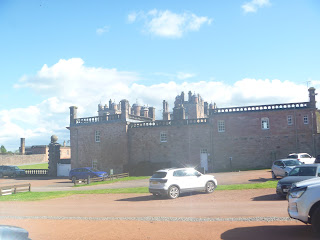One of our favourite places to visit in Dumfries and Galloway is the WWT Caerlaverock Reserve.
The Wildfowl and Wetland Trust has reserves across the UK, all of which are best known as centres for migratory wildfowl, such as geese and swans, but all are havens for a wide range of wildlife.
Caerlaverock is a vast area of wetland habitats, along with wildflower meadows and wildlife gardens, all dotted with bird hides and observation towers giving visitors great views across the reserve.

Caerlaverock is most popular in winter, when the migrating geese and swans visit, but it is just as wonderful in summer, when the dragonflies and damselflies are seen in abundance across the reserve. In 2013, we were lucky enough to visit during what must have been a mass emergence of dragonflies, as they were everywhere in vast numbers (see this post). This year, there weren't such huge numbers, but still we were impressed by what we saw, including this mating pair of Common Blue Damselflies
The wildlife garden area has several specially made homes for solitary bees, which are well-used - how many bees can you see in the photo below?
We saw a lot of Latticed Heath Moths around the reserve
The reserve is full of birds, of course. We saw plenty of Swallows, some of which were nesting in some of the bird hides and round the observation towers, so we got very good views
We also saw a family of Linnets with the parents diligently feeding their chicks, several Stonechats, two families of Mute Swans, three Teal (teal are more usually winter ducks, so it was slightly unexpected to see them), Lapwings, and had our best ever views of Sedge Warblers (though sadly the photos didn't turn out well enough to share!), we also saw Reed Warbler, Reed Buntings, Tree Sparrows and House Sparrows (both species of sparrow together at a feeding station, which is unusual in my experience), Pied Wagtails
Although we didn't see Song Thrushes, we know they are around as we found this anvil where the thrushes smash snail shells before eating the contents
We spent all day on the reserve and could easily have spent longer there, but had to leave when it closed.























































